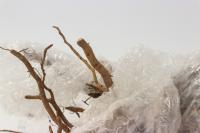1. Breeding method
(1) Soil: for the soil, it is best to cultivate in acidic or neutral soil. Its composition can be the mixed soil of river sand, rotten leaf soil and snake sawdust, and the nutrient soil composed of rotten leaf soil, field soil and sandy soil in the ratio of 5:3:2 can also be used. Be careful not to use saline alkali soil and cohesive soil, otherwise it will lead to poor growth
(2) Temperature: its best growth temperature is between 18 and 20 degrees Celsius. Because it is cold resistant, it can be placed outdoors as long as the room temperature is not less than 10 degrees Celsius

(3) Sunshine: it is a kind of plant that likes sunshine. It is suitable for sunny places with good light and good ventilation. If it is kept in a cool and dark place for a long time, it will hinder its growth, so it should be ensured that it can have enough light for a long time
(4) Watering: watering should be minimized during germination, and the amount of watering can be increased during growth. Watering can be done twice a day. When watering, pay attention to the technique. Don't pour water on the stems and leaves. Pour it slowly along the edge of the flowerpot, otherwise the water in the stems and leaves is easy to rot
(5) Fertilization: usually it does not need fertilization, but Begonia leaves in autumn will lose a lot of nutrients, so it is necessary to apply a large amount of fertilizer to supplement nutrients. In early spring, it is necessary to apply fertilizer once and water it once, which can make the fertilizer fully penetrate into the soil

2. Precautions
After falling leaves and before budding in spring, it needs to be carefully trimmed to cut off dead branches, diseased branches and thin branches, so as to increase its light transmittance and ventilation. If you want to increase the number of flower buds, you need to cut the long branches short so that other axillary buds can get more nutrition. You also need to pick the heart in time so that the nutrition is not dispersed


 jackfruit
jackfruit snake plant
snake plant hibiscus
hibiscus hydrangea
hydrangea lavender
lavender Green roses climb al...
Green roses climb al... If you don't pay att...
If you don't pay att... Management of four g...
Management of four g...

































